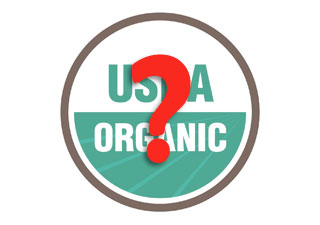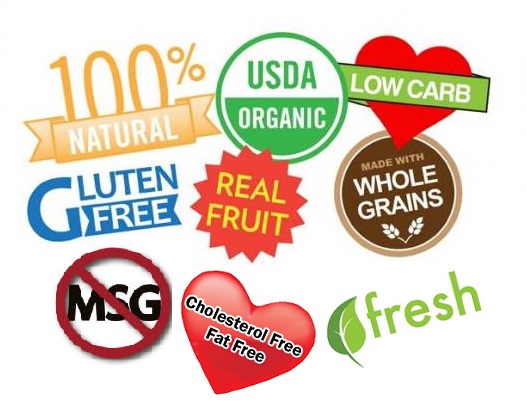
Organic or Not? (Part II)
July 3, 2012 // Nutrition, Wellness
Reading Labels.
Organic is a labeling term that indicates that the food or other agricultural product has been produced through approved methods. These methods integrate cultural, biological, and mechanical practices that foster cycling of resources, promote ecological balance, and conserve biodiversity. Synthetic fertilizers, sewage sludge, irradiation, and genetic engineering may not be used.
Organic foods are often scrutinized because of mis-use of the word in labeling. Many consumers are unaware of the differences between organic labels, and are hesitant to commit to an organic product. Organic labels can vary based on their organic ingredients.
Organic Labels

What About Other Labels?

There are other voluntary labels for livestock products, such as meat and eggs:
Free-range. This label indicates that the flock was provided shelter in a building, room, or area with unlimited access to food, fresh water, and continuous access to the outdoors during their production cycle. The outdoor area may or may not be fenced and/or covered with netting-like material. This label is regulated by the USDA.
Cage-free. This label indicates that the flock was able to freely roam a building, room, or enclosed area with unlimited access to food and fresh water during their production cycle.
Natural. As required by USDA, meat, poultry, and egg products labeled as “natural” must be minimally processed and contain no artificial ingredients. However, the natural label does not include any standards regarding farm practices and only applies to processing of meat and egg products. There are no standards or regulations for the labeling of natural food products if they do not contain meat or eggs.
Grass-fed. Grass-fed animals receive a majority of their nutrients from grass throughout their life, while organic animals’ pasture diet may be supplemented with grain. Also USDA regulated, the grass-fed label does not limit the use of antibiotics, hormones, or pesticides. Meat products may be labeled as grass-fed organic.
Organic Authorities
The National Organic Program regulates all organic crops, livestock, and agricultural products certified to the United States Department of Agriculture (USDA) organic standards. Organic certification agencies inspect and verify that organic farmers, ranchers, distributors, processors, and traders are complying with the USDA organic regulations. USDA conducts audits and ensures that the more than 90 organic certification agencies operating around the world are properly certifying organic products. In addition, USDA conducts investigations and conducts enforcement activities to ensure all products labeled as organic meet the USDA organic regulations. In order to sell, label, or represent their products as organic, operations must follow all of the specifications set out by the USDA organic regulations.
The National Organic Program oversees the certification process of organic foods and products. USDA’s National Organic Program regulates the standards for any farm, wild crop harvesting, or handling operation that wants to sell an agricultural product as organically produced. There are 50 domestic accredited certifying agents and 43 foreign accredited certifying agents. New York, for example, has two certifying agents that are USDA-accredited:
Find out which USDA-accredited certifying agents are in your state: Foreign & Domestic Certifying Agents
Misrepresentation
The word organic is central to the certification (and organic food marketing) process, and this is also questioned by some. Where organic laws exist, producers cannot use the term legally without certification. To bypass this legal requirement for certification, various alternative certification approaches are using terms like “authentic” and “natural“. One private farmer association in particular, called Certified Naturally Grown, offers a “non-profit alternative eco-labelling program for small farms that grow using USDA Organic methods but are not a part of the USDA Certified Organic program”.
Know The Difference
A growing concern within the health industry is that certifications and accreditations are replacing consumer education. Consumer education is the basis of the holistic nature of organic farming and production. When only searching for an organic certification, organic food and farming becomes easily misinterpreted and its definition manipulated.
There are multiple ways to determine the validity behind an organic product. A consumer must be thorough in reading the contents and makeup of an organic product. When food shopping, follow this easy 3-step process to determine if the organic product follows the principles and practices of organic farming.
- Look for the USDA Organic Logo
- Look for the certifying agent
- Look at the ingredients
But, Remember…
The organic section in a grocery store is not necessarily filled with “healthy” foods. Organic foods are free of pesticides, hormones, and other genetically modified processes, which are harmful to the body. A bottle of Heinz Organic Ketchup, for example, is different from their original ketchup recipe because they use sugar instead of high fructose corn syrup. Is the organic ketchup better for you? Sure, it’s a start. But just because the ingredients are more natural does not mean that they are healthy for you.

It’s still candy.
Ask questions to identify how each particular food will affect your body:
*What is this food made of? (Carbs, Protein, Fats)
*Will this food help keep me lean? (Prioritize)
*What are the ingredients?
*Is there an organic version of this food? (Free of enhancements)